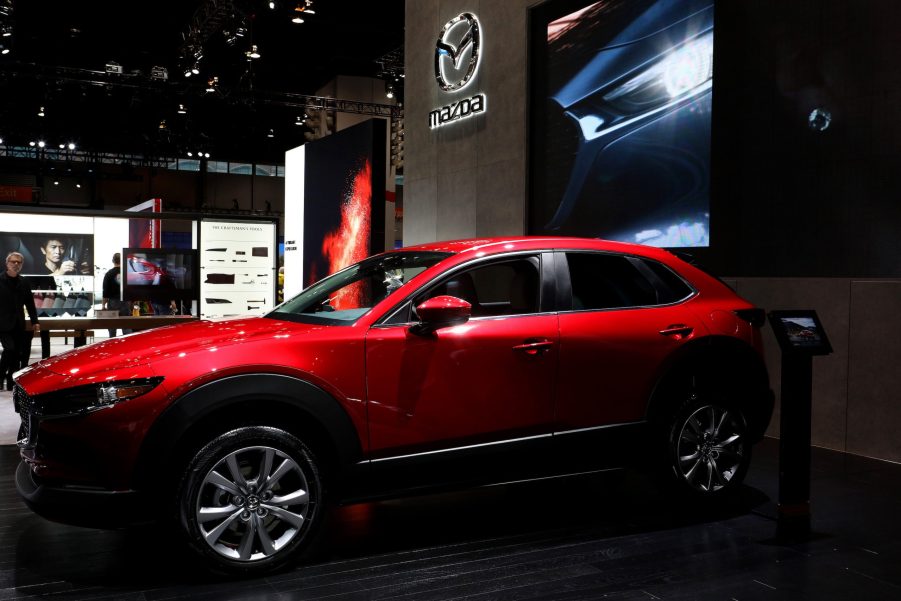
The Success of the Mazda CX-30 Could Be Hurting Another Mazda SUV
The Mazda CX-30 just came out for the 2020 model year and it’s already a huge success. Mazda was proud to report that over 33,000 CX-30 units were sold this year alone. It was only beaten by the Mazda CX-5, which sold over 128,000 units this year.
There’s another subcompact Mazda SUV that can’t keep up with the CX-30: the Mazda CX-3. Mazda’s sales figures show only around 8,000 CX-3 units were sold in 2020, almost 50 percent less compared to 2019. Why are so many people buying the Mazda CX-30 instead of the Mazda CX-3?
The all-new Mazda CX-30
For its second model year, the Mazda CX-30 has more standard features like smartphone integration. Bluetooth and a Wi-Fi hotspot are also included, plus it has a larger infotainment display than most SUVs. It’s not a touchscreen interface, but it can be controlled with voice recognition or a rotary knob.
Edmunds found the system easy enough to operate without touch capability. You can also change infotainment settings while the car is in motion, a big improvement from other Mazda vehicles. Edmunds also liked how many safety features were included on the base CX-30.
It comes with lane-keeping assistance, automatic emergency braking, forward collision warning, driver drowsiness warning, and pedestrian detection. It also has water-sensing windshield wipers and automatic headlights to assist drivers during heavy downpours of rain and snow. The Mazda CX-30 doesn’t have many standard creature comforts, but the seats can be leather and heated on higher trims.
The standard engine for the Mazda CX-30 is a 2.5-liter four-cylinder that makes 186 hp and 186 lb-ft of torque. There’s also a turbocharged version that makes 250 hp and 320 lb-ft of torque. Both engines come with a six-speed automatic transmission and AWD is standard for the turbo engine.
Just like many other Mazda vehicles, the CX-30 behaves like a small sports car rather than an SUV. Car and Driver gave the car a high rating for its nimble handling, even though its acceleration was just average. The staff’s AWD tester with the standard engine matched its EPA mileage estimates exactly at 26 mpg combined city/highway.
The slightly aged Mazda CX-3
Under the hood of the Mazda CX-3, the turbocharged 2.0-liter four-cylinder is the only engine available. It makes 148 hp and comes paired with a six-speed automatic transmission. While it’s peppy daily driver, the CX-3’s engine can’t get up to high speeds as seamlessly as the CX-30.
Still, it handles itself around town just like any other Mazda, albeit with a slightly firmer suspension. It also has a great interior, which some would argue is just as fancy as a luxury car. However, just like the Mazda CX-30, the CX-3’s backseat is a little cramped when it comes to legroom.
The Mazda CX-3 has more standard safety features than the CX-30. It has many of the same technologies, plus luxuries like a head-up display and adaptive LED headlights. The infotainment system also comes with standard touch functionality.
Is the CX-30 a better SUV?
The Mazda CX-30 and CX-3 are good cars, but there are some areas where the CX-30 definitely excels over its sibling. The CX-30 has a better powertrain and a smoother overall driving experience. However, if you want the most standard features for your money, the CX-3 is the better deal.
Both cars recently got perfect reliability ratings from Consumer Reports, so you can expect either to last for many years. Still, given its exceptional performance and rave reviews, it’s easy to see why the Mazda CX-30 is more popular.



